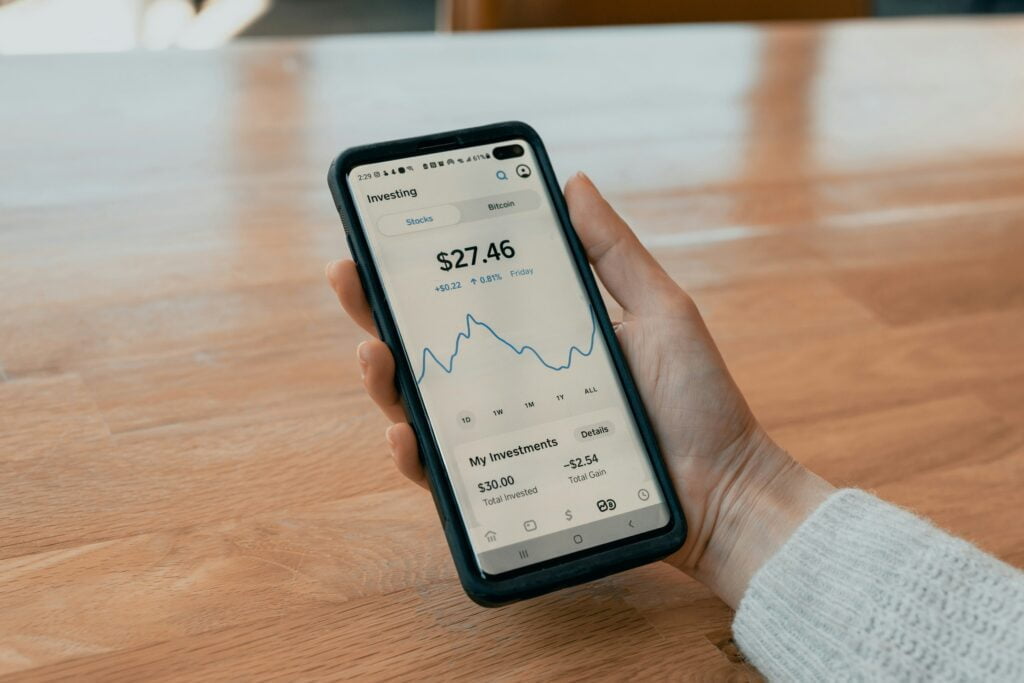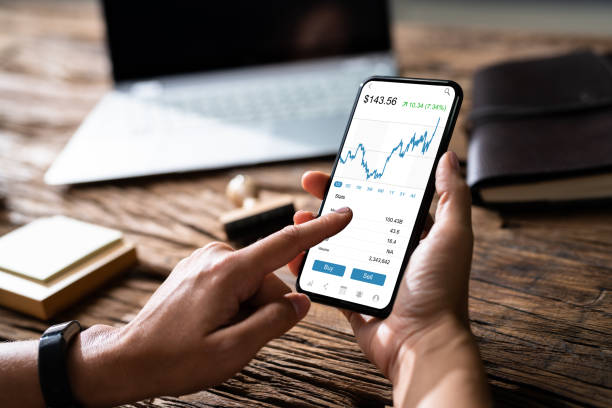How to Turn $10,000 into $100,000 or More
If you’ve come to $10,000 and are looking to grow it into a much larger sum, you’re in luck. With the right investment strategy and a bit of patience, it’s entirely possible to turn that initial $10k into $100k or more over time.
The key is to invest wisely and avoid high-risk, speculative bets. Slow and steady growth through proven investment vehicles is the best path to building wealth with your $10,000. Let’s explore some of the most effective ways to invest that money to maximize your returns.
- Max out your IRA contribution for the year. In 2023, the contribution limit is $6,500 ($7,500 if you’re age 50 or older). This allows you to take advantage of tax-deferred growth in your retirement account.
- Contribute enough to your 401(k) to get the full employer match, if available. Employer matching is essentially free money that can supercharge your retirement savings.
- Invest in a diversified portfolio of low-cost index funds or ETFs across stocks and bonds. With $10,000, you can build a well-rounded portfolio that tracks the overall market.
- Consider investing in real estate through a REIT (real estate investment trust). REITs allow you to gain exposure to commercial real estate while providing more liquidity than owning property directly.
- Buy an established online business that is already profitable. Platforms like Flippa enable you to purchase existing websites and internet businesses that you can then scale up using your own strategies.
- Invest in individual stocks, but limit this to a small portion of your overall portfolio. Thoroughly research any companies before investing directly in their shares.
- Explore higher-risk, higher-potential return investments like cryptocurrencies or peer-to-peer lending, but only with money you can afford to lose.
The best approach depends on your financial goals, risk tolerance, and time horizon. Consult with a financial advisor to develop a personalized investment plan that aligns with your objectives.

Max Out Your Retirement Accounts
One of the smartest moves you can make with $10,000 is to fully fund your retirement accounts for the year. In 2023, the contribution limit for an IRA is $6,500 ($7,500 if you’re age 50 or older). By maxing out your IRA, you’re taking advantage of the power of tax-deferred growth to supercharge your long-term returns.
If you have access to a 401(k) through your employer, contribute enough to get the full company match. Employer matching is essentially free money that can give your retirement savings a big boost. In 2023, the 401(k) contribution limit is $22,500 ($30,000 if you’re 50+).
Invest in Index Funds
Another proven way to grow your $10,000 is to invest in a diversified portfolio of low-cost index funds[1][3]. Index funds track the overall stock market and have historically delivered strong returns over the long run.
With $10,000, you can build a well-rounded portfolio that provides exposure to large-cap, mid-cap, and small-cap stocks, as well as international equities. Vanguard and Fidelity both offer excellent index fund options with rock-bottom fees.
The beauty of index funds is that you get instant diversification and market-matching returns. You don’t have to be an investing expert to benefit from the stock market’s long-term growth. Just invest regularly and let compounding work its magic over decades.
Buy Real Estate Through a REIT
If you want to invest in real estate without the hassle of being a landlord, consider putting some of your $10,000 into a real estate investment trust (REIT). REITs are companies that own and operate income-producing properties like apartment buildings, shopping centers, and office towers.
By investing in a REIT, you gain exposure to the real estate market while enjoying the liquidity of being able to buy and sell shares on a stock exchange. REITs are required by law to pay out at least 90% of their taxable income as dividends, so they can be a great source of passive income.
There are REITs that focus on different property types, so you can tailor your investment to your interests and risk tolerance. For example, you could invest in a residential REIT, a healthcare REIT, or a data center REIT. Just be aware that REITs can be volatile in the short term as their share prices fluctuate with interest rates and economic conditions.

Flip Websites and Online Businesses
If you have some entrepreneurial spirit and are willing to put in some sweat equity, you could use your $10,000 to buy and flip websites and online businesses. Platforms like Flippa enable you to purchase existing websites and internet businesses that are already generating revenue.
The key is to find undervalued properties that you can improve and resell at a profit. This could involve optimizing the website’s SEO, expanding its product line, or growing its email list and social media following. With some savvy marketing and operational improvements, you may be able to double or triple your money within a year or two.
Of course, buying and operating an online business requires a significant time commitment and carries more risk than passive investments like index funds. But if you have the skills and hustle, flipping websites can be a lucrative way to grow your $10,000 into a much larger sum.
Invest in Individual Stocks
For the more adventurous investor, putting some of your $10,000 into individual stocks can be a path to outsized returns. By carefully researching and selecting companies with strong fundamentals and growth prospects, you may be able to achieve market-beating returns.
However, investing in individual stocks is riskier than index funds, as a single company’s stock can plummet due to poor performance, management missteps, or industry disruption. To mitigate this risk, limit your individual stock investments to no more than 10-20% of your overall portfolio.
Some sectors that may be poised for strong growth in the coming years include renewable energy, electric vehicles, artificial intelligence, and cybersecurity. But be sure to do your due diligence and only invest in companies you fully understand and believe in for the long term.
Explore Crypto and P2P Lending
For the most adventurous investors with a high-risk tolerance, putting a small portion of your $10,000 into cryptocurrencies or peer-to-peer lending platforms could potentially yield outsized returns. However, these investments are highly speculative and you should only invest money you can afford to lose.
Cryptocurrencies like Bitcoin and Ethereum have the potential for massive gains but also carry the risk of extreme volatility and potential losses. P2P lending platforms like Lending Club allow you to earn interest by lending money to individual borrowers, but defaults can eat into your returns.
Allocate no more than 5-10% of your $10,000 to these high-risk, high-reward investments. And be sure to thoroughly research any crypto projects or P2P lending platforms before investing. Diversify across multiple assets to mitigate the risk of any single investment going to zero.

Develop a Balanced Investment Plan
The best approach to investing your $10,000 is to develop a balanced plan that aligns with your financial goals, risk tolerance, and time horizon. Avoid putting all your eggs in one basket and instead diversify across a mix of low-cost index funds, real estate, individual stocks, and alternative investments.
A sample allocation could look like this:
- 50% of total stock market index funds
- 20% in real estate through a REIT
- 20% in individual stocks
- 5% in cryptocurrencies
- 5% in P2P lending
Rebalance your portfolio periodically to maintain your target allocation. And be sure to review and adjust your plan as your financial situation and goals evolve over time.
Investing $10,000 wisely is just the first step. The key to turning that initial sum into $100,000 or more is to invest consistently over the long term, avoid high fees and taxes, and let the power of compounding work in your favor. With patience and discipline, you can turn that $10,000 into a life-changing amount of wealth.
Conclusion
Investing $10,000 wisely requires a thoughtful and diversified approach. By considering a mix of low-cost index funds, real estate, individual stocks, and alternative investments, you can create a balanced portfolio that aligns with your financial goals and risk tolerance.
Remember to avoid high-risk, speculative bets and instead focus on proven investment vehicles that have historically delivered strong returns over the long run.
With patience and discipline, you can turn your $10,000 into a life-changing amount of wealth. Whether you’re looking to grow your retirement savings, build a nest egg, or simply achieve financial independence, the strategies outlined in this article can help you achieve your goals.
FAQs
Q:How Should I Invest $10k for the Best Returns?
A: The best way to invest $10,000 is to diversify across a mix of low-cost index funds, real estate, individual stocks, and alternative investments. This approach can help you achieve strong returns over the long run while minimizing risk.
Q: Can I make a quick profit with $10,000?
A: While it’s possible to make a quick profit with $10,000, it’s generally not recommended. High-risk, high-reward investments often come with significant volatility and the potential for significant losses. Instead, focus on proven investment vehicles that have historically delivered strong returns over the long run.
Q: How do I get started with investing?
A: To get started with investing, you’ll need to open a brokerage account with a reputable online broker. You can then fund your account with your $10,000 and begin investing in a diversified portfolio.
Q: What are some low-cost index funds?
A: Some popular low-cost index funds include:
- Vanguard Total Stock Market Index Fund (VTSAX)
- Fidelity ZERO Large Cap Index Fund (FNILX)
- Schwab U.S. Broad Market ETF (SCHB)
Q: How do I research individual stocks?
A: To research individual stocks, start by reading financial reports and news articles about the company. Look for strong fundamentals, such as a competitive advantage, solid financials, and a history of growth. You can also use financial tools and software to analyze the stock’s performance and compare it to industry peers.
Q: Are cryptocurrencies a good investment?
A: Cryptocurrencies like Bitcoin and Ethereum have the potential for massive gains, but they also carry significant risks. It’s essential to thoroughly research any crypto project before investing and only allocate a small portion of your portfolio to these high-risk assets.
Q: How do I rebalance my portfolio?
A: To rebalance your portfolio, regularly review your asset allocation and adjust it as needed to maintain your target mix. This can help you avoid overexposure to any single asset class and ensure that your portfolio remains aligned with your financial goals and risk tolerance.
